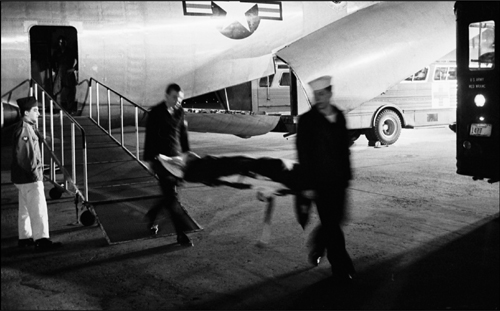
The Vietnam War is sometimes referred to as the “company commanders’ war” because so many of the battles fought were small-unit actions of forty people or fewer. The North Vietnamese Army and the Viet Cong preferred to stage hit-and-run raids and would only engage in open battles if they were trapped or had an overwhelming force.

Wounded servicemen arriving from Vietnam at Andrews Air Force Base.
Casualty rates were high among the lieutenants and captains who commanded the platoons and companies—almost four times that of officers with the rank of major and above. Because of a rotation system that caused all but the most senior commanders to serve only one year in Vietnam, incoming junior officers were generally inexperienced—being “green”—in the art of combat. Once they successfully completed their tour in Vietnam, officers were no longer obligated to return. But if they wanted to return, they were allowed to volunteer. Some officers served three tours (three years) in Vietnam. Sergeants, the backbone of most armies, worked closely with the enlisted men and assisted in the training of new lieutenants and captains. Most sergeants would do what they could to pass on their experiences to officers who were often their junior in age as well as experience. Army Sergeant Al Fallow made this comment to his company commander: “There’s the way it’s taught, and the way it’s done, and in combat, any similarity between the two is usually a matter of pure coincidence.”
The most difficult period for a junior officer in his new combat command was the first few weeks. He had to quickly learn everything he could about the men in his command—who was reliable, who was lazy, who was the best scout, and so on. And he had to learn—immediately—all the combat survival skills unique to the Vietnam War, particularly regarding the Viet Cong booby traps. If he did not, he could quickly become a casualty himself. Usually by the time an officer gained sufficient experience, he was nearing the end of his tour—referred to as being a “short” or “short-timer”—and would soon be reassigned elsewhere. Some officers volunteered to do additional tours in Vietnam, but most did not.